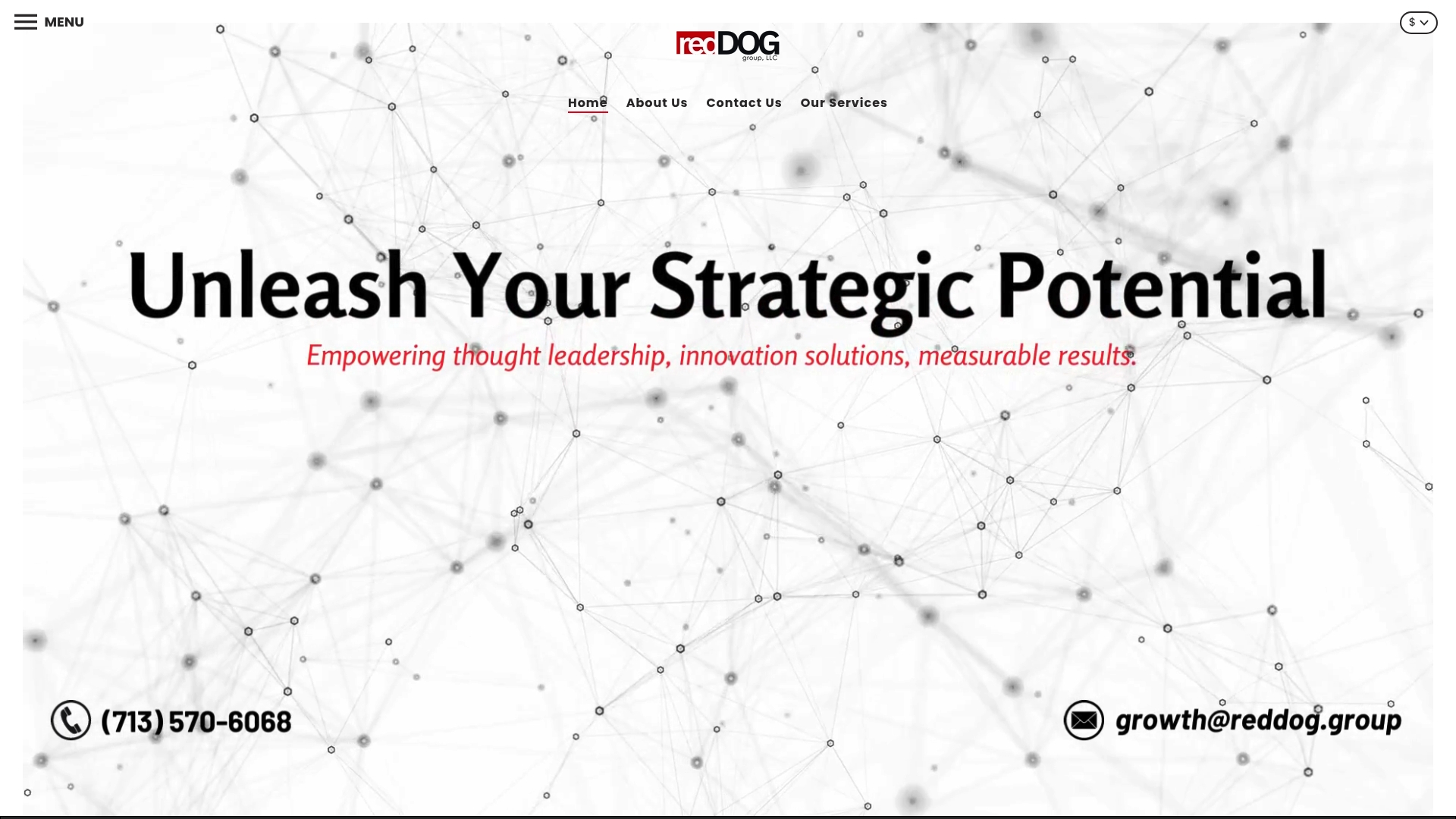
Growth Marketing Explained: Strategies for Retail Brands
Posted on
Did you know that businesses using growth marketing see up to 32 percent higher customer lifetime value than those relying on traditional methods? This data-driven approach is changing how brands attract and retain customers by focusing on real-time analytics and constant improvement. If you want to build deeper connections and outpace your competition, understanding growth marketing and its principles could be the missing piece for scaling your business.
Table of Contents
- Defining Growth Marketing And Its Core Principles
- Key Growth Marketing Channels And Methods
- Growth Marketing Versus Traditional Marketing
- Omnichannel Strategies For Modern Retailers
- Common Pitfalls And How To Avoid Them
Key Takeaways
| Point | Details |
|---|---|
| Data-Driven Approach | Growth marketing emphasizes using analytics to inform strategies, enabling businesses to make data-driven decisions for effective customer engagement. |
| Cross-Functional Collaboration | Breaking down silos among teams like marketing, product, and customer success is essential for optimizing the entire customer journey. |
| Continuous Experimentation | Regular A/B testing and strategy refinement are crucial for adapting to customer behaviors and improving marketing performance. |
| Holistic Customer Experience | A unified growth system fosters a personalized, cohesive experience across all customer touchpoints, enhancing brand loyalty and retention. |
Defining Growth Marketing and Its Core Principles
Growth marketing represents a transformative approach to business expansion that goes far beyond traditional marketing strategies. At its core, growth marketing is a data-driven methodology focused on systematically acquiring, engaging, and retaining customers through continuous experimentation and optimization.
According to ioeg, growth marketing creates a unified growth system where cross-functional teams collaborate to optimize the entire customer experience based on data, not departmental boundaries. This means breaking down traditional silos between marketing, product development, and customer success teams to create a holistic approach to business growth.
Key principles of growth marketing include:
- Customer-Centric Approach: Deeply understanding and personalizing experiences for individual customer needs
- Data-Driven Decision Making: Using analytics to track, measure, and improve marketing strategies
- Continuous Experimentation: Leveraging techniques like A/B testing to refine and optimize marketing tactics
- Cross-Functional Collaboration: Integrating efforts across product, sales, and marketing teams
As isbmblog highlights, growth marketing is characterized by its reliance on advanced analytics and automation tools. These technologies enable brands to scale personalized experiences efficiently, using strategies like email automation, chatbots, and targeted social media campaigns to drive meaningful customer engagement and sustainable business growth.
By embracing a holistic, experimental approach, Understanding the Role of Branding in Growth shows that growth marketing is not just about short-term tactics, but building a comprehensive strategy that aligns all business functions toward continuous improvement and expansion.
Key Growth Marketing Channels and Methods
Digital marketing channels represent the critical pathways through which retail brands can connect, engage, and convert potential customers. These channels are not just communication tools, but strategic platforms for driving sustained business growth and building meaningful customer relationships.
According to coursera, digital marketing channels encompass various platforms including social media, email marketing, paid advertising, and search engine optimization (SEO). The key to success lies in selecting the most suitable channels for the target audience and aligning them with specific business objectives.
Key growth marketing channels include:
- Social Media Marketing: Leveraging platforms like Instagram, Facebook, and TikTok for brand awareness and engagement
- Email Marketing: Developing personalized communication strategies for direct customer interaction
- Content Marketing: Creating valuable, relevant content to attract and retain target audiences
- Paid Advertising: Utilizing targeted ads on search engines and social platforms
- Search Engine Optimization (SEO): Improving organic visibility and website rankings
As monash highlights, developing an effective content strategy involves creating diverse content types like blogs, videos, and infographics that align with audience interests. Maintaining a consistent content calendar and repurposing successful content can significantly enhance marketing effectiveness.
For retail brands looking to expand their digital presence, 8 Essential Social Media Marketing Tips for Growth offers additional insights into leveraging these channels for maximum impact and sustainable business growth.
Growth Marketing Versus Traditional Marketing
Traditional marketing and growth marketing represent two fundamentally different approaches to business expansion and customer engagement. While traditional marketing focuses on broad, often generic messaging, growth marketing emerges as a more dynamic, data-driven strategy that transforms how businesses interact with their customers.
According to ecornell, traditional marketing methods typically concentrate on acquiring new customers at the top of the sales funnel. In contrast, growth marketing uses sophisticated data-driven insights to not only attract new customers but also engage, retain, and convert them into passionate brand advocates. This approach emphasizes continuous optimization and measurable results across the entire customer journey.
Key differences between traditional and growth marketing include:
Here’s a comparison of traditional marketing and growth marketing approaches:
| Aspect | Traditional Marketing | Growth Marketing |
|---|---|---|
| Objective | Customer acquisition | Acquisition, retention, advocacy |
| Strategy | Static, broad messaging | Data-driven, adaptive strategies |
| Metrics | Vanity metrics | Actionable, granular KPIs |
| Experimentation | Rare, fixed campaigns | Continuous A/B testing |
| Teamwork | Departmental silos | Cross-functional collaboration |
| Tools | Basic media, direct mail | Advanced analytics, automation |
| Customer Experience | Generic, mass-market | Personalized, optimized journey |
- Measurement: Traditional marketing focuses on vanity metrics, while growth marketing tracks actionable, granular performance indicators
- Approach: Traditional marketing uses static, one-size-fits-all strategies; growth marketing employs personalized, adaptive techniques
- Team Collaboration: Traditional marketing operates in silos; growth marketing requires cross-functional integration
- Experimentation: Traditional marketing relies on established methods; growth marketing continuously tests and refines strategies
ioeg emphasizes that growth marketing represents a fundamental shift in value creation by unifying marketing, product development, and customer success into a cohesive growth system. This approach relies on cross-functional collaboration and data-driven decision-making to optimize the entire customer experience, contrasting sharply with traditional marketing’s more fragmented methods.
For retailers seeking to understand this transformative approach, Effective Business Growth Strategies Guide for 2025 provides deeper insights into implementing these innovative marketing techniques.
Omnichannel Strategies for Modern Retailers
Omnichannel strategies have become the cornerstone of modern retail success, transforming how businesses engage with customers across multiple platforms and touchpoints. Unlike traditional single-channel approaches, omnichannel retailing creates a seamless, integrated experience that allows customers to interact with brands through multiple channels simultaneously.
According to coursera, effective growth marketing involves selecting the most suitable digital channels and tailoring approaches to maximize reach and engagement. This means creating a cohesive strategy that connects physical stores, online marketplaces, social media platforms, mobile apps, and other customer interaction points into a unified brand experience.
Key components of successful omnichannel strategies include:
- Consistent Brand Messaging: Maintaining uniform communication across all platforms
- Integrated Customer Data: Leveraging unified customer insights across channels
- Flexible Purchase Options: Offering seamless transitions between online and offline shopping
- Personalized Customer Experiences: Adapting interactions based on individual customer preferences
- Real-Time Inventory Synchronization: Ensuring accurate product availability across all sales channels
monash emphasizes the importance of developing a comprehensive content plan that includes diverse content types like blogs, videos, and infographics. This approach helps retailers create a consistent narrative that resonates across different platforms while maintaining a unified brand identity.

Modern retailers looking to dive deeper into implementation can explore 7 Types of Omnichannel Strategies for Retail Growth, which provides detailed insights into crafting a robust, interconnected retail strategy.
Common Pitfalls and How to Avoid Them
Growth marketing is a powerful strategy, but retailers often encounter significant challenges that can derail their efforts. Understanding and anticipating these common pitfalls is crucial for creating a successful, sustainable marketing approach that drives meaningful business growth.
According to ioeg, enterprises implementing comprehensive growth marketing approaches can achieve remarkable results, with 32% higher customer lifetime value and 28% lower customer acquisition costs compared to traditional marketing models. However, realizing these benefits requires avoiding several critical mistakes that can undermine marketing effectiveness.
Common growth marketing pitfalls include:
- Data Misinterpretation: Misunderstanding or oversimplifying complex customer data
- Lack of Cross-Functional Alignment: Siloed teams working without collaboration
- Inconsistent Experimentation: Failing to systematically test and refine strategies
- Neglecting Customer Feedback: Ignoring real customer experiences and insights
- Overreliance on Vanity Metrics: Tracking impressive-looking but meaningless performance indicators

isbmblog emphasizes the importance of continuous experimentation and cross-team collaboration. Successful growth marketing requires leveraging automation tools like email marketing, chatbots, and social media platforms while maintaining a holistic approach that integrates product development, sales, and customer success teams.
Retailers seeking to navigate these challenges can find additional strategic guidance in How to Start Omnichannel Sales for Retail Success, which provides actionable insights for building robust, adaptable marketing strategies.
Unlock Your Retail Brand’s Full Potential with Growth Marketing
Struggling to break through growth plateaus or overwhelmed by scattered marketing efforts? This article highlights critical challenges like data misinterpretation, lack of cross-functional collaboration, and inconsistent experimentation that often hold retail brands back from truly scaling. Growth marketing calls for a customer-centric, data-driven approach combined with omnichannel strategies to not only acquire but engage and retain loyal customers.
Discover how Reddog Group’s expert team can help you overcome these hurdles through tailored solutions in digital marketing, marketplace management, and omnichannel integration. We bring proven expertise managing over 50 brands and 30,000 SKUs to create measurable results that matter — from enhancing your Amazon FBA and DTC channels to optimizing your entire customer journey.

Explore our Digital & Business Consulting Services by Reddog Consulting to get started on a data-driven, experimental growth strategy that combines marketing, product, and sales expertise. Ready to transform your retail brand? Visit our Home page and partner with us today at reddog.group to start scaling smarter and faster.
Frequently Asked Questions
What is growth marketing?
Growth marketing is a data-driven approach focused on systematically acquiring, engaging, and retaining customers through continuous experimentation and optimization, rather than traditional broad marketing strategies.
How does growth marketing differ from traditional marketing?
Growth marketing emphasizes customer retention and advocacy, uses adaptive, data-driven strategies, and requires cross-functional collaboration, while traditional marketing often focuses solely on customer acquisition with static messaging and departmental silos.
What are some effective growth marketing channels for retail brands?
Effective growth marketing channels for retail brands include social media marketing, email marketing, content marketing, paid advertising, and search engine optimization (SEO), tailored to the target audience and business objectives.
What common pitfalls should retailers avoid in growth marketing?
Retailers should avoid misinterpreting data, lacking cross-functional alignment, inconsistent experimentation, neglecting customer feedback, and overrelying on vanity metrics to ensure their growth marketing strategies are effective and sustainable.
Leave a comment: